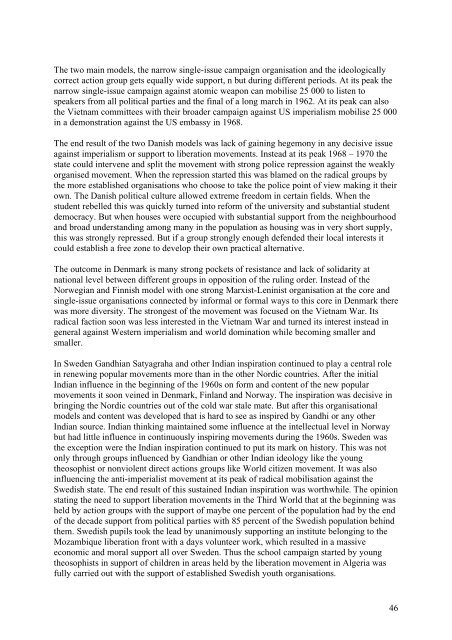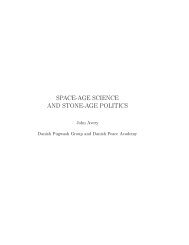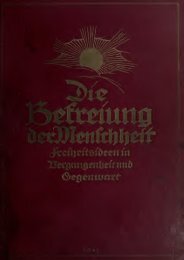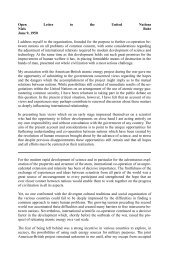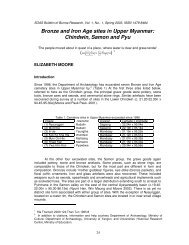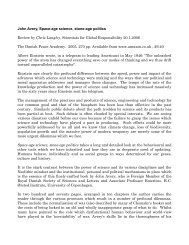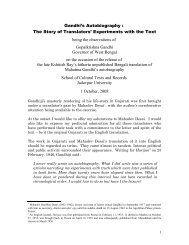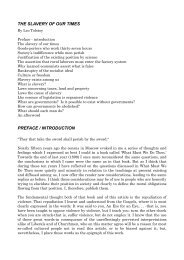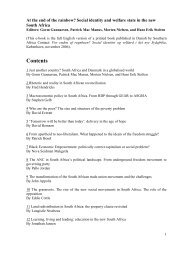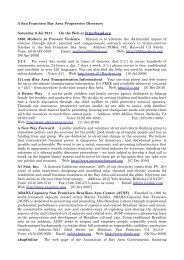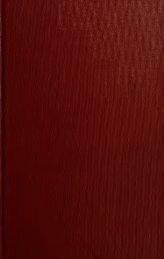Indian-Nordic Encounters 1917-2006 - Det danske Fredsakademi
Indian-Nordic Encounters 1917-2006 - Det danske Fredsakademi
Indian-Nordic Encounters 1917-2006 - Det danske Fredsakademi
You also want an ePaper? Increase the reach of your titles
YUMPU automatically turns print PDFs into web optimized ePapers that Google loves.
The two main models, the narrow single-issue campaign organisation and the ideologically<br />
correct action group gets equally wide support, n but during different periods. At its peak the<br />
narrow single-issue campaign against atomic weapon can mobilise 25 000 to listen to<br />
speakers from all political parties and the final of a long march in 1962. At its peak can also<br />
the Vietnam committees with their broader campaign against US imperialism mobilise 25 000<br />
in a demonstration against the US embassy in 1968.<br />
The end result of the two Danish models was lack of gaining hegemony in any decisive issue<br />
against imperialism or support to liberation movements. Instead at its peak 1968 – 1970 the<br />
state could intervene and split the movement with strong police repression against the weakly<br />
organised movement. When the repression started this was blamed on the radical groups by<br />
the more established organisations who choose to take the police point of view making it their<br />
own. The Danish political culture allowed extreme freedom in certain fields. When the<br />
student rebelled this was quickly turned into reform of the university and substantial student<br />
democracy. But when houses were occupied with substantial support from the neighbourhood<br />
and broad understanding among many in the population as housing was in very short supply,<br />
this was strongly repressed. But if a group strongly enough defended their local interests it<br />
could establish a free zone to develop their own practical alternative.<br />
The outcome in Denmark is many strong pockets of resistance and lack of solidarity at<br />
national level between different groups in opposition of the ruling order. Instead of the<br />
Norwegian and Finnish model with one strong Marxist-Leninist organisation at the core and<br />
single-issue organisations connected by informal or formal ways to this core in Denmark there<br />
was more diversity. The strongest of the movement was focused on the Vietnam War. Its<br />
radical faction soon was less interested in the Vietnam War and turned its interest instead in<br />
general against Western imperialism and world domination while becoming smaller and<br />
smaller.<br />
In Sweden Gandhian Satyagraha and other <strong>Indian</strong> inspiration continued to play a central role<br />
in renewing popular movements more than in the other <strong>Nordic</strong> countries. After the initial<br />
<strong>Indian</strong> influence in the beginning of the 1960s on form and content of the new popular<br />
movements it soon veined in Denmark, Finland and Norway. The inspiration was decisive in<br />
bringing the <strong>Nordic</strong> countries out of the cold war stale mate. But after this organisational<br />
models and content was developed that is hard to see as inspired by Gandhi or any other<br />
<strong>Indian</strong> source. <strong>Indian</strong> thinking maintained some influence at the intellectual level in Norway<br />
but had little influence in continuously inspiring movements during the 1960s. Sweden was<br />
the exception were the <strong>Indian</strong> inspiration continued to put its mark on history. This was not<br />
only through groups influenced by Gandhian or other <strong>Indian</strong> ideology like the young<br />
theosophist or nonviolent direct actions groups like World citizen movement. It was also<br />
influencing the anti-imperialist movement at its peak of radical mobilisation against the<br />
Swedish state. The end result of this sustained <strong>Indian</strong> inspiration was worthwhile. The opinion<br />
stating the need to support liberation movements in the Third World that at the beginning was<br />
held by action groups with the support of maybe one percent of the population had by the end<br />
of the decade support from political parties with 85 percent of the Swedish population behind<br />
them. Swedish pupils took the lead by unanimously supporting an institute belonging to the<br />
Mozambique liberation front with a days volunteer work, which resulted in a massive<br />
economic and moral support all over Sweden. Thus the school campaign started by young<br />
theosophists in support of children in areas held by the liberation movement in Algeria was<br />
fully carried out with the support of established Swedish youth organisations.<br />
46


